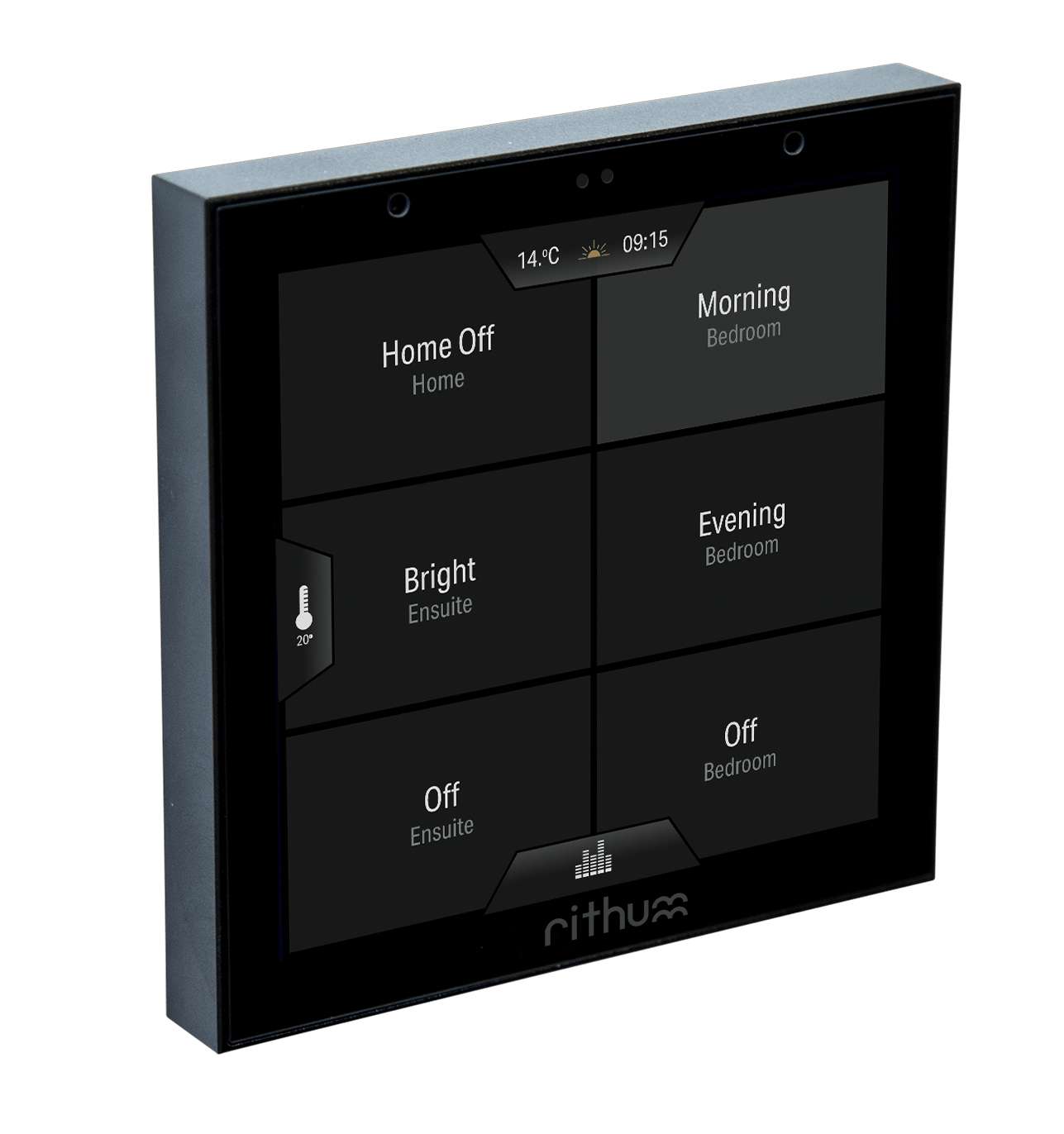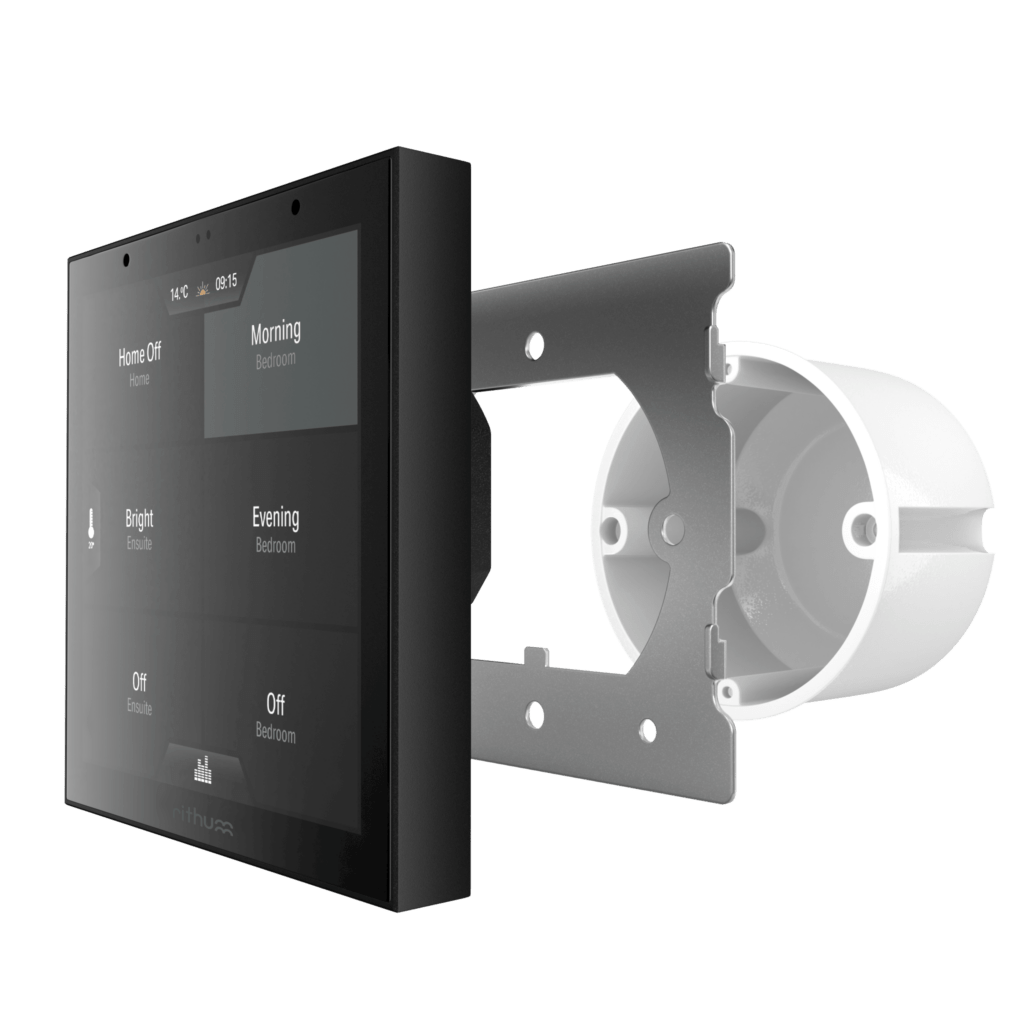Are you intrigued by the idea of a smart home but don’t know how to begin? Our Smart Home Beginner Guide can help! From energy-saving smart thermostats to air purifiers, we’ll show you how to create your own fully automated home. Say goodbye to the guesswork and hello to a smarter living experience.
This modern era of tech is bringing with it greater convenience in the home and greater accessibility for many. But if you’re not tech-savvy and up to date on all the latest trends, the idea of making a smart home can feel a bit overwhelming.
Luckily, it’s not as complicated as you first might think. In this guide, we are going to cover all the basics you need to know about how to make a smart home. We will cover:
- What is a smart home?
- The difference between a smart home and having smart devices
- The latest smart home technology and its benefits
- How to use a control panel to operate your smart home
What is a smart home and how does a smart home work?
A smart home is a home that uses interconnected technology to simplify daily life. Smart homes vary widely in the features that they include but in a general sense, your smart system will connect with various devices throughout your home and allow you to control your lighting, audio, climate, home security, and kitchen appliances without being next to them and usually in a more feature-rich manner. Smart homes are typically able to be controlled remotely (often from your mobile) or from a panel and some also have voice assistants that will let you give verbal commands.
The difference between a smart home and smart devices

You can have a smart device such as sprinklers that you can operate from an app on your phone, but this does not make your home a smart home.
A smart home consists of interconnected devices and systems, typically controlled by one panel or app. These systems automatically respond to your inputs through a central unit and often include remote accessibility.
In contrast, a smart device is an individual piece of technology that can be remotely controlled and automated.
Essentially, a smart home is made up of many smart devices that are all interconnected. The interconnection is key. You could have many smart devices in your home, but if they are not all controlled in one panel, then you have a home with smart devices rather than a smart home. This is what the Rithum Switch aims to solve.
How to make your home smart
The process of making your home a smart home could be totally different from your neighbours. The important thing is to focus on your needs and implement what is most important to you first. There are two typical approaches to making a smart home – “all at once” or “one step at a time.” You may choose to set up your smart home panel and step by step connect the new smart home devices to it. Or, you might choose to purchase your panel and new devices all at once. Either way, there are a few things everyone needs to do in order to prepare their home to become a smart home.
- Upgrade your WiFi: Smart homes use various wireless technologies to communicate with one another, one of them being Wi-Fi. As such, you will want to make sure you have a good Wi-Fi signal throughout your home that can handle many connected devices. As a rule of thumb, the free router your ISP supplies you is generally not as good as even reasonably priced alternatives you can purchase online.
- Identify your needs: Before investing in smart home devices, consider the smart home benefits that matter most to you and your family. Identify the areas of your home where consolidation and remote control would bring the greatest impact on your life. Evaluate how increased access and control over your home devices can enhance your daily living experience, from energy savings to added security and convenience.
- Do your research: Make sure you have well-researched the various smart home technologies available. You want to find the right one that has the integrations you are looking for, can connect with your current smart devices, or has the ability to add plugins that support new devices as you add them.
- Decentralised vs. centralised: A key area to consider in your research is whether you want a centralised or decentralised smart home. A centralised smart home involves equipment that has one central location, for example, a metal rack in a cupboard. All of your smart devices are connected to your central processor and this essentially controls them and gives them instructions such as “turn off lights at 20:00.” You can think of a centralised system as having a “brain” (your central processor) that controls the body (your smart devices). A decentralised system, as you might guess from the name, does not have a central processor or “brain.” Instead, the processors are located within each device or an in-room processor. With minimal central equipment, the “brains” are essentially distributed which can improve the reliability of the devices in your smart home.
Historically, connected homes have had their equipment centralised into one “hub” for the home. This is where all the processors and switchgear lived and where all the wires ran back to. With the evolution of wireless technologies cutting systems largely free of wires (and therefore the centralised location they run back to), plus an increase in CPU power that room-devices carry, the trend has been towards decentralisation of connected systems.
There are, however, pros and cons to both centralised and decentralised smart systems. But in most cases, a decentralised system comes out on top. The main advantage of a decentralised system is increased reliability. If one device goes down on a centralised system the whole system and all your devices can be affected. With a decentralised system only that device, or that room (depending on your setup) has the potential to be impacted.
Not only is it more reliable, but it’s also easier to upgrade. You can change and upgrade localised parts of a system without having to make changes to the entire system. Often centralised systems are hard-coded to work with specific devices, so updating them requires expensive software engineer call-out charges. In contrast, a decentralised system is often more flexible and the device will have the relevant information built into it. You then just share it with other connected devices.
Smart home ideas
Nearly every aspect of home life where technology is used – from lightbulbs to refrigerators – has seen the introduction of a smart home alternative. Here are some ideas for devices you may want to connect in your smart home.
- Smart TVs that connect to the internet and allow you to watch content through apps such as Apple TV and Netflix.
- Smart lighting systems, such as Philips Hue that can detect when you are in a room and change or turn off lights as needed, which can also be controlled via Rithum Switch.
- Smart thermostats, such as Nest that let you schedule and remotely control your home temperatures, or even Rithum Switch which itself is a thermostat.
- Smart locks that help you grant or deny access to home visitors. Smart locks can sometimes also detect when you are outside of your door and unlock the doors for you.
- Pet care can be automated with smart feeders.
- Kitchen appliances have seemingly endless options ranging from smart coffee makers that will make you a fresh cup at a specific time to smart refrigerators that can help you make shopping lists or tell you when food has expired.
How to use a smart home control panel

Smart homes are the future and when implemented correctly, they can be extremely beneficial for your family and even guests. A smart home can help keep you secure, energy efficient and healthy, and even help your older relatives and loved ones stay independent for longer.
The first step in creating a smart home is finding the right smart home panel. With Rithum Switch, the process of creating a smart home is simplified. The setup is easy as the device automatically pulls the required information from the system it is connecting with, and the panel simply replaces an 86mm x 86mm square light switch. You then have access to a convenient panel that gives you control of lighting, audio, and climate in one place and has some sensors built-in to boot. Using Rithum’s built-in temperature sensor also acts as a thermostat helping to consolidate the amount of hardware required.
The scenes screen gives you access to your most used presets. You can choose to control one room or the whole house at the touch of a button and select up to eight of your most used scenes to show on the scenes screen.
Start building your home today
Are you ready to start making your home a smart home? Rithum Switch is a premium smart home panel that makes setting up a smart home simple. Our devices connect with many of the most popular and useful smart products on the market and configuration that make our smart control much simpler for you to use. Ready to start building your smart home, learn more about Rithum Switch here.







